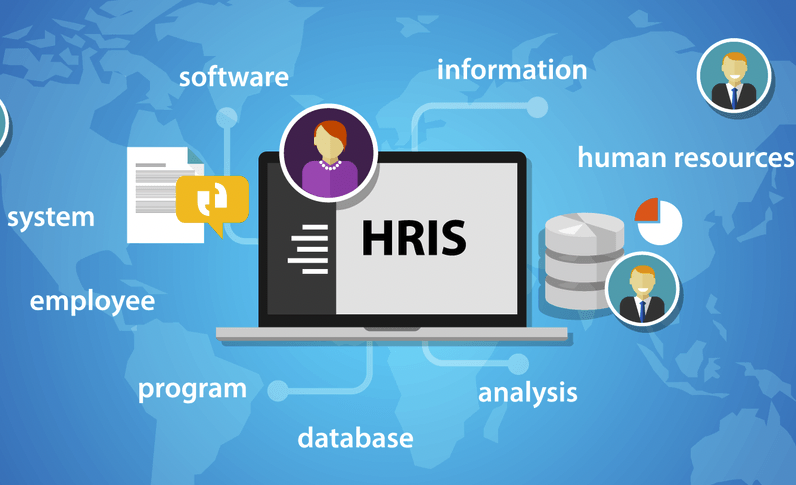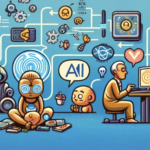
HRIS systems can help human resources departments keep track of employee data, performance metrics, and compliance with company policies and procedures.
These systems can also help managers make better decisions about staffing levels, training needs, and compensation.
When choosing an HRIS system, it is important to consider the needs of your organization and the features that will be most useful to you. There are a variety of HRIS systems on the market, so it is important to do your research before making a purchase.
An HRIS system can save your human resources department time and money by automating some of the tasks that are typically done manually.
For example, an HRIS system can generate reports on employee absenteeism or tardiness. This information can be used to improve attendance policies or to identify problem areas that need to be addressed.
An HRIS system can also keep track of employee benefits and payroll information. This can make it easier for your human resources department to administer these programs and ensure that employees are getting the benefits they are entitled to.
An HRIS system is a valuable tool for any organization, but it is important to choose the right system for your needs.
There are many different HRIS systems on the market, so be sure to do your research before making a purchase.
Table of Contents
Best HRIS Systems
#1 Freshteam
Freshteam is a cloud-based HRIS system that offers a comprehensive suite of tools for managing employees.
Freshteam includes features for tracking employee data, performance metrics, and compliance with company policies.
The system also includes tools for managing payroll and benefits, as well as a time clock feature. Freshteam is one of the most popular HRIS systems on the market and is used by companies of all sizes.
#2 BambooHR
BambooHR is another popular cloud-based HRIS system.
BambooHR offers similar features to Freshteam, including employee data management, performance tracking, and policy compliance.
The system also includes tools for managing payroll and benefits, as well as a time clock feature. BambooHR is used by companies of all sizes.
#3 Namely HR
Namely HR is an online human resource management system that offers a suite of tools to help manage employee data.
It includes features such as payroll, benefits, and time tracking. Namely HR is a cloud-based solution that can be accessed from any device with an internet connection.
Namely HR is a comprehensive solution that offers a wide range of features to help businesses manage their employee data. It includes tools for payroll, benefits, and time tracking. As the name suggests, Namely HR is designed to help businesses manage their human resources more effectively.
Namely HR offers a free trial for new users interested in testing the software. After the free trial, Namely HR charges a monthly subscription fee based on the number of users.
#4 Paycor HR
Paycor HR is an intuitive, all-in-one human resource information system (HRIS) that helps businesses manage employee data more effectively. It is designed to streamline HR processes and improve efficiencies.
Paycor HR includes a robust suite of features, including applicant tracking, onboarding, time and attendance tracking, benefits administration, and performance management. It also offers integration with payroll systems, which makes it easy to manage employee data across the entire organization.
Paycor HR is a cost-effective solution for small to medium-sized businesses. It is easy to use and scale as your business grows. Paycor HR is also backed by 24/7 customer support.
#5 Monday HR
Monday’s HRIS system is designed to manage employee data, including payroll and benefits information.
The system can also create reports and track employee performance. Additionally, the system may include a time and attendance module to help managers track employee hours worked.
Monday’s HRIS system is easy to use and provides a user-friendly interface for employees and managers alike.
The system is also highly customizable, so it can be tailored to fit the needs of any business.
Whether you’re looking for a simple way to manage employee data or a more complex system to track employee performance, Monday’s HRIS system is a great option.
#6 Rippling
Rippling is an HRIS software that allows you to manage your employee data in one place. It includes features such as payroll, benefits, and compliance. Rippling is a cloud-based HRIS system, so it can be accessed from anywhere.
Rippling’s dashboard gives you an overview of your employee data. You can see information such as headcount, new hires, and attrition. Rippling also allows you to run reports on your data.
Rippling integrates with a variety of third-party applications. This includes payroll providers, time tracking software, and benefits providers. Rippling also has an API that allows you to connect it to other systems.
#7 ADP Payroll
ADP Payroll is a cloud-based payroll and human resources (HR) software solution for businesses of all sizes.
ADP Payroll offers a wide range of features, including time and attendance tracking, benefits administration, and tax compliance.
ADP Payroll is a comprehensive solution that can help your business save time and money.
ADP Payroll is easy to use and offers a wide range of features to meet the needs of your business. The software is constantly updated with the latest tax laws and regulations, so you can be confident that your payroll is compliant.
ADP Payroll also offers direct deposit, so you can pay your employees quickly and easily.
If you are looking for a comprehensive payroll and HR solution, ADP Payroll is a great option for your business.
What Is an HRIS? | AIHR Learning Bite
What Features Should I Look for in an HRIS System?
When choosing an HRIS system, you should consider the needs of your organization and the features that would be most useful to you. Some common features of HRIS systems include:
Employee self-service portals
Employee self-service portals will allow employees to access their own HR information, such as their contact information, payroll records, and benefits information.
This can save time for your human resources department by reducing the number of requests that they have to process.
Time and attendance tracking
Time and attendance tracking can help you keep track of employee hours worked and vacation days taken.
This information can be used to improve scheduling or to identify potential issues with time management.
Benefits administration
Benefits administration will allow you to manage employee benefits programs, such as health insurance or retirement savings plans.
This can save time for your human resources department by automating some of the tasks that are typically done manually.
Performance management
Performance management tools will help you track employee performance metrics, such as sales numbers or customer satisfaction ratings.
This info can be used to identify areas where employees need improvement or to recognize outstanding performance.
Compensation management
Compensation management tools will help you manage employee salaries and bonuses.
This data can be used to ensure that employees are being paid fairly and to budget for future raises and promotions.
Reporting and analytics
Reporting and analytics tools will generate reports on employee data, such as attendance records or performance reviews.
This information can be used to improve company policies or to identify trends within the organization.
Each organization has different needs, so it is important to choose an HRIS system that has the features that you need. Y
ou should also consider the scalability of the system and whether it will be able to grow with your organization.
How Much Does an HRIS System Cost?
The cost of an HRIS system varies depending on the features and functionality that you need.
Some HRIS systems are available for free, while others can cost thousands of dollars per year.
When considering the cost of an HRIS system, you should also consider the time and money that you will save by using the system.
An HRIS system can automate many of the tasks that are typically done manually, such as benefits administration or payroll processing. This can free up time for your human resources department to focus on other tasks.
You should also consider the return on investment (ROI) of the system. The ROI is the amount of money that you will save by using the system, divided by the cost of the system.
For example, if you spend $1,000 on an HRIS system and it saves you $5,000 per year in labor costs, then your ROI would be 5:1.
To calculate the ROI of an HRIS system, you will need to know the following information:
- The cost of the system
- The number of hours that will be saved by using the system
- The hourly wage of the employees who will be using the system
Once you have this information, you can use the following formula to calculate the ROI:
ROI = (Savings from using the system / Cost of the system) x 100
For example, if you spend $1,000 on an HRIS system and it saves you 10 hours per week in labor costs, then your ROI would be 500:1.
The ROI of an HRIS system can vary depending on the features and functionality that you need. To get an accurate estimate of the ROI, you should contact the vendors of the systems that you are interested in and ask for a cost analysis.
How to Implement an HRIS in 6 Steps | AIHR Learning Bite
What Are the Benefits of an HRIS System?
An HRIS system can offer many benefits to your organization, such as:
Improved data accuracy
When information is entered manually, there is a greater chance for errors.
An HRIS system can help to reduce these errors by automating some of the tasks, such as time and attendance tracking.
Increased efficiency
An HRIS system can automate many of the tasks that are typically done manually, such as payroll processing or benefits administration.
This can free up time for your human resources department to focus on other tasks.
Improved decision making
An HRIS system can provide managers with the data that they need to make informed decisions about their workforce.
For example, a manager can use the system to track employee performance or to identify training needs.
Improved communication
An HRIS system can help to improve communication between employees and managers.
For example, the system can be used to send automatic reminders about upcoming deadlines or to distribute company news.
FAQs – HRIS Systems
What is an HRIS system?
An HRIS system is a software application that helps businesses manage their human resources.
The system can be used to track employee data, such as attendance records or performance reviews.
What are the benefits of an HRIS system?
An HRIS system can offer many benefits to your organization, such as: improved data accuracy, increased efficiency, improved decision making, and improved communication.
How much does an HRIS system cost?
The cost of an HRIS system varies depending on the features and functionality that you need. Some systems are available for free, while others can cost thousands of dollars per year.
When considering the cost of an HRIS system, you should also consider the time and money that you will save by using the system.
How do I calculate the ROI of an HRIS system?
To calculate the ROI of an HRIS system, you will need to know the following information: the cost of the system, the number of hours that will be saved by using the system, and the hourly wage of the employees who will be using the system.
Once you have this information, you can use the following formula to calculate the ROI: ROI = (Savings from using the system / Cost of the system) x 100.
For example, if you spend $1,000 on an HRIS system and it saves you 10 hours per week in labor costs, then your ROI would be 500:1.
Can I get a free HRIS system?
There are some free HRIS systems available, such as OrangeHRM and Sentrifugo.
However, these systems may not have all of the features and functionality that you need.
What is an HRIS analyst?
An HRIS analyst is a person who specializes in the use of HRIS systems.
The analyst can help you to choose the right system for your organization and to implement the system.
What is an HRIS consultant?
An HRIS consultant is a person who specializes in the use of HRIS systems.
The consultant can help you to choose the right system for your organization and to implement the system.
How do I find an HRIS consultant?
You can find an HRIS consultant by searching online or by asking other companies who have implemented an HRIS system.
What is an HRIS coordinator?
An HRIS coordinator is a person who helps to manage the implementation of an HRIS system.
The coordinator can be responsible for tasks such as training employees on how to use the system or resolving technical problems.
How long does it take to implement an HRIS system?
The time required to implement an HRIS system varies depending on the size and complexity of the system.
Some systems can be up and running in a matter of weeks, while others may take months or even years to implement.
How do I choose the right HRIS system for my organization?
When choosing an HRIS system, you should consider the needs of your organization and the budget that you have available.
You should also consider the features and functionality that are important to you.
Some factors that you may want to consider include: employee self-service, time and attendance tracking, payroll processing, benefits administration, performance management, and communication tools.
What are some common mistakes made when implementing an HRIS system?
Some common mistakes that are made when implementing an HRIS system include: not involving all stakeholders in the process, not clearly defining the goals of the system, not testing the system before going live, and not providing adequate training to employees on how to use the system.
When should I consider upgrading my HRIS system?
You should consider upgrading your HRIS system if it is no longer meeting the needs of your organization or if you are experiencing problems with data accuracy or efficiency.
You may also want to upgrade your system if you are adding new functionality or expanding your business.
How often should I update my HRIS system?
You should update your HRIS system on a regular basis to ensure that the data is accurate and to add new features and functionality.
How do I know if my HRIS system is secure?
When choosing an HRIS system, you should consider the security of the system. Some factors that you may want to consider include: the type of encryption used, the location of the data, and the level of access that employees have to the data.
What are some common features of HRIS systems?
Some common features of HRIS systems include:
- employee self-service
- time and attendance tracking
- payroll processing
- benefits administration
- performance management, and
- communication tools
What are some common benefits of HRIS systems?
Some common benefits of HRIS systems include:
- improved data accuracy
- reduced paper waste
- increased efficiency, and
- improved decision-making
What is an HRIS report?
An HRIS report is a report that is generated by an HRIS system.
The report can include information such as employee data, payroll data, or performance data.
How do I generate an HRIS report?
To generate an HRIS report, you will need to use the reporting features of your HRIS system.
Some systems allow you to create custom reports, while others provide pre-defined reports.
Can I export my HRIS data?
Yes, most HRIS systems allow you to export data to a variety of formats, such as Excel or CSV.
What is an HRIS audit?
An HRIS audit is an assessment of an HRIS system to ensure that it is functioning properly.
The audit can be conducted by an external company or by the internal IT department.
How often should I conduct an HRIS audit?
You should conduct an HRIS audit on a regular basis, such as annually, to ensure that the system is functioning properly and that the data is accurate.
What are some common issues that are found during an HRIS audit?
Some common issues that are found during an HRIS audit include: data accuracy problems, system security vulnerabilities, and lack of system documentation.
Summary – HRIS Systems
HRIS systems will differt in the features they offer however most will include payroll, time and attendance tracking and benefits administration.
They are easy to use and offer great comprehensive solutions for businesses of all sizes. ADP Payroll is a great option that is constantly updated with the latest tax laws and regulations.
Direct deposit is also available for quick and easy payments to employees.
Types of Human Resources (HR) Software
- Applicant Tracking System (ATS)
- Background check software
- Benefits administration software
- Career management software
- Compensation management software
- Core HR software
- Corporate LMS
- Corporate wellness software
- Course authoring software
- eLearning and Training software
- Employee engagement software
- Employee motivation and recognition software
- Employee scheduling software
- Freelance platforms
- HR analytics software
- HR management suites
- Onboarding software
- Performance management system
- Pre-employment screening software (i.e., background check software)
- Pre-employment testing software
- Recruiting software
- Recruiting automation software
- Recruitment marketing software
- Reference check software
- Sales force automation (SFA) software
- Staffing software
- Talent acquisition software
- Talent management software
- Time tracking software
- Training management system
- Video interviewing software
- Workforce analytics software
- Workforce management software


![Backwards 3: How to Type "Ɛ" [EASY]](https://softwareblade.com/wp-content/uploads/2022/02/Screen-Shot-2022-02-19-at-9.03.25-PM-150x150.png)